Source: The Conversation (Au and NZ) – By Kate Douglas, Professor, Flinders University
This article is part of our three-part series on summer reads for young people after a very unique year.
2020 has been a particularly tough year for those approaching the latter years of high school.
Young people have witnessed large-scale economic insecurity and unstable education systems. Teenagers have reported high levels of stress and anxiety. But they have also demonstrated outstanding resilience and resolve in adapting to the “new normal”.
During COVID-19, cultural texts have become more important than ever — a place to turn to for knowledge, reflection, support and escape.
Read more: How reading habits have changed during the COVID-19 lockdown
Reading can be therapeutic for young readers during difficult times. It offers something other media doesn’t — greater social and emotional benefits. It also does more to stimulate the imagination and creates a sense of moral achievement in readers.
With this in mind, here are some summer reading ideas for older teenagers. The texts I have chosen demonstrate how young characters have coped with trauma and uncertainty.
Research suggests young people are more likely to listen to their peers than their teachers when it comes to reading recommendations.
So, I spoke to my 18-year-old son and asked him to name five types of books he would like to read over the summer.
He suggested:
- a classic book he’s always wanted to read but hasn’t
- a book penned by a young author
- a “throwback” young adult novel he has already read
- an autobiography of someone who has overcome adversity
- something provocative that was published this year.
Inevitably some of my selections meet more than one of his criteria.
by S.E. Hinton
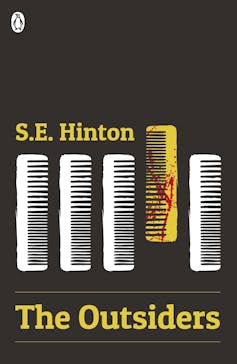
The Outsiders is thought to be one of the first novels written specifically for young adults. The coming of age novel explores the class divide between the rival Greasers and Socs gangs in the American South in the mid-1960s.
The book’s challenging and emotive representations of inequality, violence, crises of conscience, and the powerful love of family and friends, make it an enduring standout for young readers. The first-person narration constructs intimacy between the reader and our protagonist, Ponyboy Curtis, as he approaches an increasingly uncertain future.
Hinton started the book at 15, finished it at 16, and it was published when she was 18. It is said she wrote the book because it was the sort of book she herself wanted to read.
In a year when many young people have experienced isolation and separation, Ponyboy’s wisdoms should resonate powerfully:
It seemed funny to me that the sunset she saw from her patio and the one I saw from the back steps was the same one. Maybe the two different worlds we lived in weren’t so different. We saw the same sunset.
2. Autobiography (memoir): Crazy Brave (2012)
by Joy Harjo
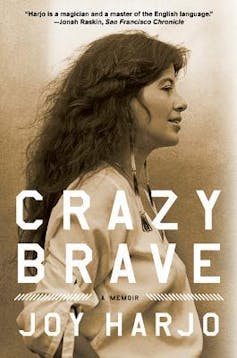
Cherokee, Creek painter, musician and US Poet Laureate, Harjo wrote her memoir when she was 61.
Crazy Brave recalls her early life from birth to her early 20s. The story is abstract and non-linear in structure, making the memoir unpredictable, which destabilises the reader’s experience.
Harjo’s memoir is confronting and, at times, graphic. But her spiritual connections, and trust of her own “knowing” (instinct, or inner vision) will inspire readers keen to escape problematic right or wrong, or black and white perceptions of experience. As Harjo astutely observes:
In the end, we must each tend to our own gulfs of sadness, though others can assist us with kindness, food, good words, and music. Our human tendency is to fill these holes with distractions like shopping and fast romance, or with drugs and alcohol.
by Jessie Tu
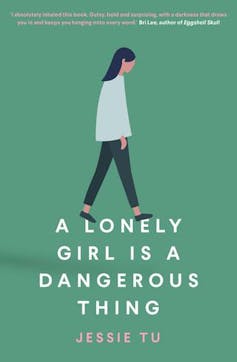
28-year-old Tu’s debut novel presents 22-year-old violinist child prodigy Jena Chung. We follow Jena’s sense of alienation and detachment as she attempts to find meaning in the world.
Lonely Girl is not a fun read, but it is a timely one. We need to see more Asian-Australia women’s voices in literature because of the important provocations they make about race and misogyny in Australia. Tu wanted this novel to be a conversation starter and it certainly is.
Tu’s is a powerful intervention young readers will appreciate. It is a book about making bad choices while feeling so much pressure to be “good”:
I throw myself into things, expecting always to get what I want. And I always get what I want. Now it feels like I’ve failed all over again. Only this time there’s no motivation behind it. I’ve just failed myself, and it hurts in a strange, unfamiliar way. The wound is deeper than anything I’ve ever felt.
This novel contains graphic representations of sex. It is recommended for readers 17 and over.
4. Written in 2020: The Morbids (2020)
by Ewa Ramsey
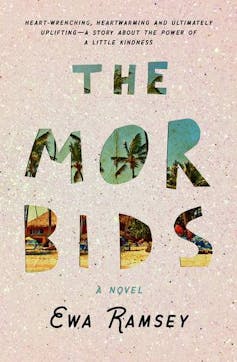
This is a wonderfully compassionate book about living with anxiety caused by our 20-something protagonist Caitlin’s fear of death. The Morbids explores the value of friendship and romance amid youthful fears and phobias.
Ramsey’s debut novel is a difficult read. The style of the novel (fragmented, sometimes repetitive language) attempts to bring the reader closer to the experience of mental illness. But the characterisations are warm and the moral is ultimately hopeful.
It’s a book about therapy and letting people in when it is the last thing you feel like you can do, because “Sometimes you need to give up on death … to have the time of your life”.
by Becky Albertalli
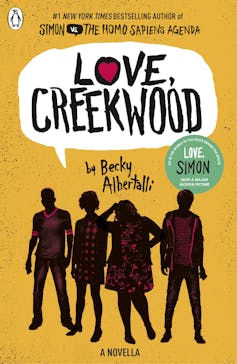
Not exactly a throwback, but if you enjoyed Simon vs the Homosapiens Agenda as much as my teens and I did, here is the latest instalment of the Simonverse.
Love, Creekwood is a short epistolary romance novella (the story is narrated via the characters’ emails to each other). It is “part 3.5” in the series and functions as an epilogue.
Love, Creekwood follows the characters to college and we follow the progression of two same-sex relationships. The book explores the challenges of being too close and too far away from a partner. It explores the mental health struggles often triggered by loneliness and fear.
Love, Creekwood is a light-hearted but genuine representation of what the first year of university can feel like.
As Simon explains:
When we say we want to freeze time, what we mean is that we want to control our memories. We want to choose which moments we’ll keep forever. We want to guarantee the best ones won’t slip away from us somehow. So when something beautiful happens, there’s this impulse to press pause and save the game. We want to make sure we can find our way back to that moment.
Albertalli is donating all proceeds from the sale of this novella to The Trevor Project, an organisation committed to crisis and suicide prevention for LGBTQIA youth.
Read more: Teen summer reads: how to escape to another world after a year stuck in this one
The author would like to thank to Katerina Bryant, Kylie Cardell, Joshua Douglas-Spencer and Emma Maguire for sharing ideas for this article.
– ref. Teen summer reads: 5 novels to help cope with adversity and alienation – https://theconversation.com/teen-summer-reads-5-novels-to-help-cope-with-adversity-and-alienation-149546







